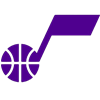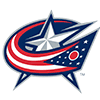This is a column I have contemplated writing for a couple weeks, and so I really hope readers find it helpful. In this day of extreme analytics, I think we can lose sight of the human side of playing baseball – specifically the art of pitching in the game. Quite correctly we evaluate pitchers based on stuff – a combination of repertoire, velocity and movement – and command of that stuff. Most of that can be converted into numbers, albeit with things like fielding and even good or bad luck impacting those numbers. So how do we explain good scores in those categories not always resulting in superior performance? I think the best explanation is something called "rhythm." That is, even before the pitch clock, a pitcher in rhythm would typically perform better.
For the purposes of defining some of this thing called "rhythm," I'll focus on a handful of pitchers who appear to have achieved rhythm even though rule makers have tried very hard to make that difficult to achieve. This is theoretical. I have no way of getting into a pitcher's head to see if his timing is in synch. I can only note that many pitchers are inexplicably struggling mightily to find their rhythm.
They have figured it out (I think): This is necessarily a short list. High performance is just that, a combination of skills that makes the pitcher better than the rest, or at least capable of being better than the rest. To be considered,
This is a column I have contemplated writing for a couple weeks, and so I really hope readers find it helpful. In this day of extreme analytics, I think we can lose sight of the human side of playing baseball – specifically the art of pitching in the game. Quite correctly we evaluate pitchers based on stuff – a combination of repertoire, velocity and movement – and command of that stuff. Most of that can be converted into numbers, albeit with things like fielding and even good or bad luck impacting those numbers. So how do we explain good scores in those categories not always resulting in superior performance? I think the best explanation is something called "rhythm." That is, even before the pitch clock, a pitcher in rhythm would typically perform better.
For the purposes of defining some of this thing called "rhythm," I'll focus on a handful of pitchers who appear to have achieved rhythm even though rule makers have tried very hard to make that difficult to achieve. This is theoretical. I have no way of getting into a pitcher's head to see if his timing is in synch. I can only note that many pitchers are inexplicably struggling mightily to find their rhythm.
They have figured it out (I think): This is necessarily a short list. High performance is just that, a combination of skills that makes the pitcher better than the rest, or at least capable of being better than the rest. To be considered, the pitcher must have achieved exceptional command – not just control – of a minimum of three, but typically at least four, pitches. Further, he needs good velocity and superior movement on that full arsenal of pitches. It sounds easy enough, but it takes a lot to make the grade in all categories. Note, I was looking specifically for pitchers with exemplary performance that is somewhat unexpected (rather than the accepted elite). Keeping in mind this is a bit subjective, let's take a look at my "found it" short list:
- Michael Kopech (White Sox) – He defines the full package. He can push triple digits with a fastball that dances. His breaking pitches are devastating. And, recently he can throw any pitch in his arsenal in any count and never miss the black. There just aren't any chinks in his armor, and he is completely in rhythm.
- Mitch Keller (Pirates) – Being an Indianapolis resident, I had ample opportunity to see Keller pitch in the minors. Unfortunately, he didn't bring the dominant guy to Pittsburgh – until fairly recently. The light went on and he learned that nibbling was a bad idea. Now he reaches back and says good luck hitting this!
- Miles Mikolas (Cardinals) – He is not overpowering, so he doesn't usually pile up strikeouts, but when he's clicking, he can carve up a strike zone. His first few 2023 starts were awful, but now he's all around the strike zone, and weak contact is the name of the game. He just needs the Cardinals to provide solid defense.
- Nathan Eovaldi (Rangers) – Eovaldi has had his share of struggles, and injuries have sapped his stuff, his command and most certainly his rhythm. Now healthy, and back in stride, he can confidently throw just about anything in his repertoire and hitters seem to rarely have an answer. Just stay out of the trainer's room.
- Michael Wacha (Padres) – This one makes me skittish. Based solely on his peripherals he appears to have "figured it out," but unlike the others listed here he still looks very hittable to me. He doesn't walk many, throwing strikes allows him to get deeper into games, and PETCO Park helps, but I'm hesitant.
That's a current list (IMHO). The list just happens to include five pitchers, which is not a static number. There could be more or less. It all depends on qualifying. That said, there are obviously pitchers in the next tier. One of them (or more) could jump onto the list at some point. Time, performance and rhythm will tell.
Because I know you'll ask, here is a quick look at my expanded "in rhythm" group in no particular order. Joe Ryan and Sonny Gray in Minnesota, Shane McClanahan in Tampa Bay, Shohei Ohtani in Anaheim, and Kodai Senga in New York are right there. Then we have veterans like Zac Gallen (Diamondbacks), Spencer Strider (Braves), Framber Valdez (Astros), Logan Gilbert (Mariners), and Marcus Stroman (Cubs). You may note that young pitchers – even the most highly regarded ones – are pretty much nonfactors on this list with the possible exception of Hunter Brown (Astros).
Folks, constantly searching for the aces in waiting is what we try to do here in the Musings. You won't often find one – they can be truly a generational talent – but there are always guys with huge upside out there tossing hints that they are just a little rhythm away from being a difference-maker on your fantasy staff.
So, where are the kids?
For a pitcher, maybe more so for young pitchers, rhythm equates to almost every aspect of life. I have lived it. It's all about your routine. Like my own routine. On game days, early to bed and early to rise, usually between 6 and 7 a.m., breakfast was oatmeal with fruit, toast, coffee and juice. Like every day, some time on the bike, then a shower. I preferred pitching at night because I was very fond of an afternoon nap. I didn't eat or drink anything before or during the game besides ice water. In fact, one of my nicknames was "Iceman," which I became pretty fond of. The day after a game I slept in a bit later, there was the bike, and a lot of rest for my arm. Subsequent days would include a side session at about 75 percent effort, some stairs for the all-important legs, then later in the week some long toss and leisurely shagging balls in the outfield during BP. That is just a tiny sample of the routine that all pointed to rhythm on the mound.
I don't know other's routines. It doesn't really matter because every individual's daily regimen is different. However, I can practically guarantee they all have one. And, even though the player can regulate their overall daily routine, what about in-game? If I had to throw a pitch every 15 to 20 seconds, regardless of the current situation, I'm not real sure I could have been as effective.
So, why are young arms so scarce on our "they have figured it out" list? After all, being younger, they have a better chance of having pitched under a pitch clock. Theoretically, many young pitchers should be familiar with – maybe even accustomed to – pitching with a stopwatch scrutinizing their every move. I'm going to admit that is a head-scratcher for me. Maybe the normal (considerable) stress of trying to prove you belong in the big leagues when coupled with no time to adjust is enough to put most of them over the edge. Young pitchers are generally volatile, and it can be difficult under the best of circumstances, but I'm holding out some hope that their experience in the minors will make it possible for them to adjust more quickly than their veteran counterparts. I just hope the expected initial struggles don't create a very steep hill to climb. Only time will tell.
Some Notable Rotation Ramblings:
- Nationals young arm MacKenzie Gore isn't in the figured it out list of starting pitchers yet, but he is definitely tossing hints. His problem is command inconsistency. When he's on (see his last start against the Royals), he is truly dominating, He just needs experience and a bit better command to get there.
- Former Cy Young award winner Corey Kluber has struggled with the Red Sox and those struggles bought him a ticket to the bullpen. He was very clearly out of rhythm, and the bullpen role (my guess) is hopefully temporary to let him try to work things out. Boston didn't bring him to town to pitch bullpen innings.
- Have I mentioned how I hate lingering injuries? Atlanta's Michael Soroka was just getting past the Achilles injury he suffered in 2019, but then other aches and pains showed up this spring. There weren't any "official" setbacks, but progress was brutally slow, and he finally made his first MLB start in more than 1,000 games.
- Baltimore has been a 2023 wow and part of their success has been Tyler Wells. I was so tempted to include him with his sparkling 0.83 WHIP on the figured it out list (instead of Wacha) but he does have a couple concerns. With very modest stuff, if he misses his spots, he gets hit pretty hard so he has to limit base-runners.
- Colorado's Dinelson Lamet has been through the gamut. He was a rising star before injuries and inconsistency set in. He was just another arm in the pen, then back stiffness put him on the IL, and his rehab innings rekindled hope. His first MLB start since 2021 was better than the numbers. Keep an eye on him.
Endgame Odyssey:
It appears we finally have a changing of the guard in closing duties for the White Sox, as Liam Hendriks is back. Kendall Graveman will soon move back to a set-up role, and I can guarantee you everyone in the game will be cheering for Hendriks as he looks to get back in the ninth-inning groove. I watched the Twins' Jhoan Duran the other day (always a pleasure). He was sitting 103 and 104, so I suppose being a little straight is to be expected, but you better be ready. Speaking of gas, keep an eye on the Angels' Ben Joyce. It probably won't happen soon as he needs to prove he can throw strikes, but if Carlos Estevez misplaces the strike zone, Joyce clearly has the raw stuff to eventually close games. In Tampa Bay, the pendulum for Pete Fairbanks has swung to injured list again. Jason Adam is back to closing for at least a couple weeks. Almost as if on cue, Miami's Dylan Floro has struggled as their primary closer (of late) A.J. Puk nears a return from the injured list. Puk will no doubt get the ninth inning back.
The original plan for this week was an update of my Kids on Parade watch list, but I really felt some thoughts on the massive early season struggles of many pitchers was needed. We'll plan on a Kids on Parade update for next week.


































